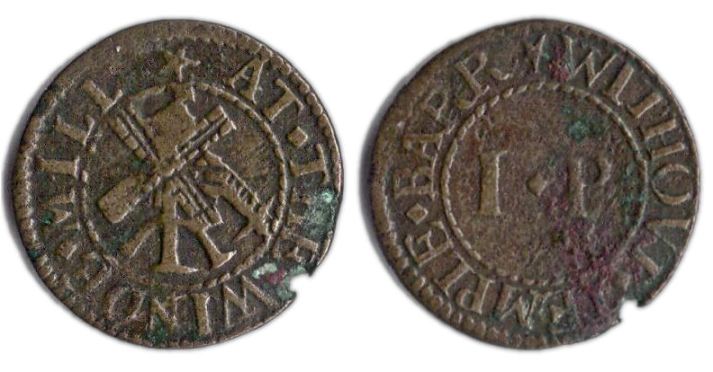The above copper farthing measures 15.5 mm and weighs 1.00 grams. It was issued in the name of a tradesman operating from premises marked by the sign of the Wind Mill in the district of Temple Bar Without, Westminster.
Obverse: (star) AT.THE.WINDE.MILL , around twisted wire inner circle, within the depiction of a open-trestle post mill.
Reverse: (star) WTHHOVT.TEMPLE.BARR: , around twisted wire inner circle, a pair of initials I . P , within.
The exact location of the business which issued this token is not know but presumably it lay off The Strand. The token’s issuer (i.e. Mr. I. or J. P.) or his precise trade have not as yet been identified. However, as the sign board of the windmill was often adopted by inn-keepers, brewers, taverners and occasionally bakers and mealmen (i.e. a dealer in meal or grain) it is likely that this token’s issuer had an association with one of these trades.
In his book “London Signs” Bryant Lillywhite’s lists over 50 historic examples of sign boards bearing the name of the windmill, the first of which appear in the early 16th century. While the sign may have been adopted by certain tradesmen over time it is possible that in some cases its original use may have signified the earlier site of an actual windmill.
The windmill depiction on the token’s obverse clearly shows an open-tresel type post windmill. Like the one illustrated below.
Such type of mill would have been common throughout Britain in the 17th century and earlier. Today there are only a handful of examples of this type still remaining in England.




I am changing that I am building one that is one quarter size already it has become popular and hasn’t any sales yet.
It will grind grain with a one foot meal stone and sive the flower.
Later it will be converted into a electric generator, I can’t wait to set sail, I will be making the final plans available for others.
LikeLike